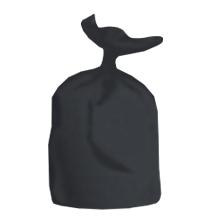Tuesday 24 January 2023
Damaged sand dunes at Grandes Rocques are being restored by Agriculture, Countryside and Land Management Services (ACLMS) by re-using old Christmas trees, alongside fencing.
The dunes are an important habitat locally and form the natural coastal defence between the beach and the coast road.
Dune vegetation binds sand together forming a natural 'wall' against storm surges and high waves. They prevent coastal flooding, and at Grandes Rocques they stop sand blowing onto the road behind. As well as benefiting us, dunes hold rich biodiversity and provide a home to species such as sea rocket, sea kale, and the Cornish shield bug, which is rare in the UK.
ACLMS are working with Environment Guernsey on a two-phased approach to restore this area of the Island's natural coastal defences.
In the first phase, sand that has built up over time will be removed from official pathways, making them easier to use. Fencing and Christmas trees will then be placed in the dune in a process known as 'dune thatching'. Thatching uses biodegradable materials such as brush and Christmas trees to encourage dune recovery by stabilising the dune, reducing windspeeds, and encouraging deposition of blown sand. Fencing will be erected to support this process.
The second phase will take place after the large tides of the spring equinox. Fencing will be placed at the base of the dune to deter erosion caused by trampling and encouraging natural regeneration of the dune habitat. If required, marram grass may be planted to speed up the dune recovery. The best way to stabilise a dune is through encouraging native plants to establish which have an extensive root system and can bind the sand.
Depending on the outcomes this year, the process may be repeated in future.
To help with dune stabilisation, the public are asked to always stay on the pathways and never light barbeques near vegetation. Trampling through marram grass weakens and breaks the root structure, decreasing its ability to bind sand and damaging or killing the plant. Creating new pathways through the dune can lead to 'blow outs', when wind is funnelled through areas of bare sand and causes further erosion to the sides and behind, accelerating the issue.
Sand dunes are of great value and Island-wide this biodiverse habitat has declined by 34% from 1999 to 2018. While the dunes at Grandes Rocques have fluctuated over time, calculations from aerial photography suggest a third of the dune has been lost since 2001. Sand dunes are dynamic features that are continually changing, but they are put under stress due to the proximity of infrastructure, continued trampling and storm events. These stressors can lower their efficacy as a coastal defence, and maintenance is required to preserve and protect the natural benefits they offer us. They protect us, let's protect them!













